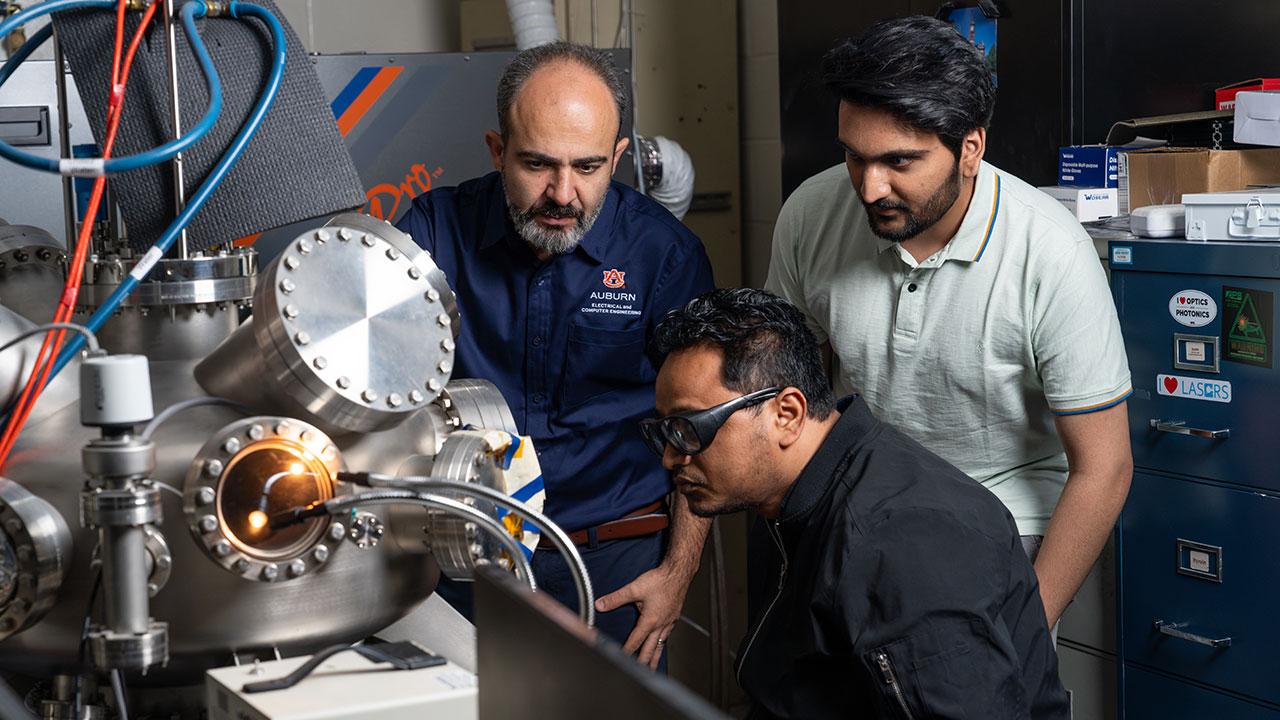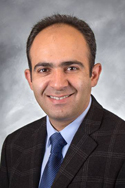Associate professor in electrical and computer engineering part of $540K National Science Foundation grant
Published: Sep 6, 2024 9:00 AM
By Joe McAdory
Masoud Mahjouri-Samani, the Godbold Associate Professor in the Department of Electrical and Computer Engineering, is working to advance the science of atomic interfaces between layered 2D quantum materials.
His collaborative research proposal, “Effect of Twist Angle on the Interfacial Thermal Conductance of Homo/Heterojunctions,” was recently awarded a three-year, $540,000 grant ($269,528 for Auburn) from the National Science Foundation. Mahjouri-Samani is collaborating with Iowa State University Mechanical Engineering Professor Xinwei Wang.
Twist angle refers to the angle at which one layer of a material is rotated relative to another layer when they are stacked together. In the context of 2D materials, this twist angle can significantly influence the properties of the material, such as how heat or electricity moves through it.
“When these materials are stacked to form homo- and heterojunctions with varying twist angles, they exhibit new, exotic properties and functionalities,” Mahjouri-Samani said.
The goal of the project is to investigate how the twist angle affects the interlayer thermal conductance and junction-substrate interfacial thermal conductance of 2D homo- and heterojunctions, investigate the effect of temperature and provide deep physics understanding about the twist angle effect on atomistic modeling and machine learning.
Monolayered 2D quantum materials, such as transition metal dichalcogenides, are less than one nanometer thick. The atomically thin 2D layers will be synthesized and their precise twist-angle interfaces will be created in the Mahjouri-Samani's Laser-Assisted Science and Engineering (LASE-END) lab. Mahjouri-Samani has developed innovative techniques to manufacture these quantum materials and interfaces with exceptional precision and quality.
To date, no experimental work has measured the effect of twist angle on the interlayer thermal conductance at homo- and heterojunctions of 2D layers. This challenge arises from the extreme difficulty in measuring temperature differences and heat flux across these junctions.
Collaborators at Iowa State will develop and utilize new Raman techniques with specifically designed energy transport states to investigate how the twist angle affects both the interlayer thermal conductance and the junction-substrate interfacial thermal conductance of 2D homo- and heterojunctions. The team will also study the influence of temperature and provide a deep, physics-based understanding of the twist angle effect through atomistic modeling and machine learning.
Knowledge gained from this project will substantially advance the scientific understanding and provide the critical knowledge for material and device design in 2D material-related microelectronics and sensors, Mahjouri-Samani said.
“We aim to advance the science of future quantum technologies, contribute to U.S. leadership in this field, make a positive societal impact through technological advancements, and educate the next generation of skilled professionals,” Mahjouri-Samani said. “This represents some of the most advanced studies about the interface energy transport at homo- and heterojunctions with consideration of thermal nonequilibrium between optical and acoustic phonons, radiative electron-hole recombination, and hot carrier diffusion.”
Media Contact: , jem0040@auburn.edu, 334.844.3447
Masoud Mahjouri-Samani with graduate students Suman Jaiswal (seated) and Aarsh Patel in the LASE-END laboratory at Broun Hall.


